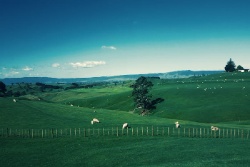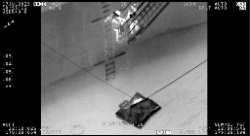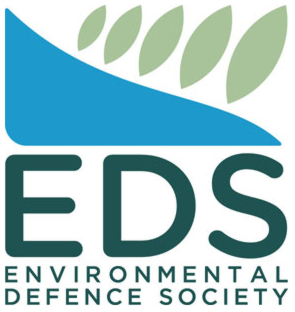‘Only A Matter Of Time’ Before A Baby Is Harmed Due To Nitrate Contamination, Warns Greenpeace
Greenpeace Aotearoa says that the news that the Gore water supply had exceeded the Government’s maximum allowable value of nitrate in drinking water raises concerns over potential harm to infants.
This is the second town to make headlines by exceeding nitrate levels in the town water supply in the last year, with Canterbury’s Glenavy township exceeding the MAV (maximum allowable value) in December last year. The MAV was set in the 1960s to prevent methemoglobinemia, or Blue Baby Syndrome, which can be fatal.
Greenpeace spokesperson Will Appelbe says "It’s only a matter of time before we see a baby harmed in New Zealand due to consuming formula mixed with nitrate contaminated water. It is absolutely unacceptable that rural communities are unable to drink the water coming out of their kitchen tap - and this is happening more and more frequently."
"The main source of this contamination is the intensive dairy industry - in particular, the overuse of synthetic nitrogen fertiliser. To avoid the risk to life that is posed by nitrate contamination, we need to stop the pollution at the source, and that means implementing a sinking cap on the use of synthetic nitrogen fertiliser.
Advertisement - scroll to continue reading"However, the Luxon Government is doing the opposite. Rather than changing our laws to protect freshwater, Chris Bishop is implementing a freshwater pollution plan. He is weakening the national direction on freshwater, and removing the cap on synthetic nitrogen fertiliser use.
"We know that the use of synthetic nitrogen fertiliser is causing nitrate contamination, and already towns in rural areas like Canterbury and Southland are facing the consequences of this, with undrinkable water. Removing limits on fertiliser use will worsen the drinking water crisis - and it’s only a matter of time before it proves to be dangerous."
There are several health risks associated with nitrate levels much lower than the current maximum allowable value of 11.3 mg/L. Long term exposure to nitrate contaminated water above 1 mg/L has been linked to an increased risk of bowel cancer. At levels above 5 mg/L, the New Zealand College of Midwives recommends that pregnant people consider finding another source of water, due to an increased risk of preterm birth.
Gore’s water supply tested at 11.4 mg/L of nitrate on Friday. Nitrate cannot be removed by boiling drinking water, so those with high levels of nitrate must find an alternative water source or invest in costly reverse osmosis filters.
Greenpeace says that the best way to reduce harm done by nitrate pollution in the long-term is to regulate the source of the pollution.
"We’re calling on this Government to make decisions that will protect rural communities’ access to safe drinking water, and prevent the health impacts that are known to arise from nitrate contamination," says Appelbe.
"New Zealanders overwhelmingly want clean water in lakes, rivers, and their kitchen taps - it’s time for Luxon to deliver."


 Gordon Campbell: On The Costs Of Regulating Cost, And Burkina Faso As A Role Model
Gordon Campbell: On The Costs Of Regulating Cost, And Burkina Faso As A Role Model Rural Women New Zealand: 100 Years Of Service
Rural Women New Zealand: 100 Years Of Service Serious Fraud Office: SFO Leads Anti-Corruption Taskforce Pilot To Strengthen Public Sector Resilience
Serious Fraud Office: SFO Leads Anti-Corruption Taskforce Pilot To Strengthen Public Sector Resilience Dog Lovers of Monte Cecilia: Locals Challenge Puketāpapa Local Board And Auckland Council’s On-Leash Policy Change For Monte Cecilia Park
Dog Lovers of Monte Cecilia: Locals Challenge Puketāpapa Local Board And Auckland Council’s On-Leash Policy Change For Monte Cecilia Park Maritime New Zealand: Three Rescued In High-Seas Operation After Vessel Abandoned North Of New Zealand
Maritime New Zealand: Three Rescued In High-Seas Operation After Vessel Abandoned North Of New Zealand Health Coalition Aotearoa: Experts Urge Fix As Government Expands Failing Lunch Scheme To Primary Schools
Health Coalition Aotearoa: Experts Urge Fix As Government Expands Failing Lunch Scheme To Primary Schools Helen Clark Foundation: The Helen Clark Foundation Launches Honorary Fellow Programme
Helen Clark Foundation: The Helen Clark Foundation Launches Honorary Fellow Programme


